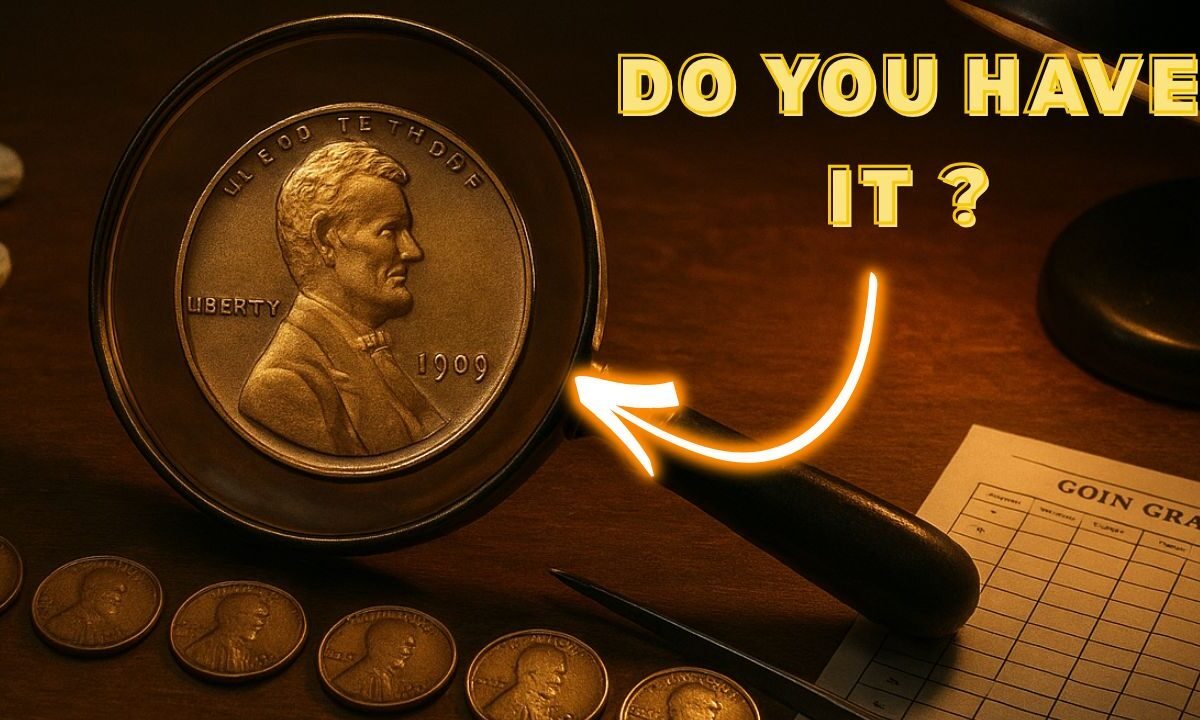The Lincoln Wheat Cent (1909–1958) remains one of America’s most beloved collectible coins. Whether you’re a beginner or an experienced collector, understanding how to grade Wheat Pennies is the key to knowing their true value.
Grading helps determine how much wear a coin has, how well it was struck, and how its color and luster affect its worth.
This guide explains everything you need to know — from the Sheldon grading scale to identifying high-point wear and key date varieties worth hundreds or even thousands of dollars.
Understanding the Sheldon Grading Scale (1–70)
Coin grading is based on the Sheldon scale, ranging from 1 (Poor) to 70 (Perfect Mint State). Lower numbers indicate heavy circulation and wear, while higher grades represent coins with minimal or no signs of handling. Here’s a simplified breakdown for Wheat Pennies:
| Grade Category | Condition Description | Typical Characteristics |
|---|---|---|
| G-4 / VG-8 (Good to Very Good) | Heavily worn, with only outlines visible | Lincoln’s face and wheat stalks are flat |
| F-12 / VF-20 (Fine to Very Fine) | Moderate wear but details visible | Some hair detail; lettering clear |
| XF-40 (Extremely Fine) | Light wear on high points | Most details sharp; some luster remains |
| AU-50 / AU-55 (About Uncirculated) | Very slight wear | Strong luster; minor friction on cheek and wheat tips |
| MS-60 to MS-67+ (Mint State) | No wear, fully struck | Full detail with complete mint luster |
Each grade directly impacts value. For instance, a 1914-D Wheat Cent in Good condition may sell for a few hundred dollars, while an uncirculated example can be worth thousands.
Where to Look for Wear
To accurately grade a Wheat Cent, focus on areas that show wear first:
- Obverse (Front): Examine Lincoln’s cheek, jawline, and hair above his ear. These high points flatten quickly with circulation.
- Reverse (Back): Look at the top and inner lines of the wheat stalks. On higher grades, all lines should remain visible and sharp.
- Lettering and Rim: Check if the letters in “LIBERTY” and “IN GOD WE TRUST” remain clear and raised. In worn coins, these become faint or merge into the rim.
Even a small difference in wear can shift a coin’s grade dramatically.
Copper Color Designations (BN, RB, RD)
The color of a Wheat Penny matters almost as much as its grade. Over time, copper reacts with air and changes color. Collectors and grading services use three designations:
- BN (Brown) – Coin has turned dark brown with minimal red luster.
- RB (Red-Brown) – About 15–85% of the original red remains.
- RD (Red) – At least 85% of the coin still shows its bright, original red copper tone.
Two coins with the same numeric grade can differ significantly in value based on color — a red (RD) example often sells for double or triple a brown (BN) one.
Key Dates and Valuable Varieties
Certain Wheat Pennies are especially rare and worth grading or certifying due to low mintages or errors. Here are some key examples every collector should know:
| Date / Variety | Mintmark | Reason for Value |
|---|---|---|
| 1909-S VDB | San Francisco | First-year issue with designer initials; major key coin |
| 1914-D | Denver | Extremely low mintage; hard to find in high grades |
| 1922 No D | Denver | Mintmark filled or missing; rare variety |
| 1931-S | San Francisco | Depression-era scarcity |
| 1955 Doubled Die | Philadelphia | Bold doubling on obverse lettering |
Spotting one of these coins in top condition can make a huge difference to your collection’s value.
How to Tell Strike vs. Wear
One of the biggest mistakes beginners make is confusing a weak strike with wear. A weak strike occurs when a coin wasn’t fully pressed during minting, leaving soft details but retaining luster.
Wear, on the other hand, flattens details and removes luster due to handling. Always use a 5x–10x magnifier and good lighting to inspect texture differences before assigning a grade.
Learning to grade Wheat Pennies is both an art and a science. By understanding the Sheldon scale, recognizing high-point wear, and appreciating the importance of copper color, collectors can confidently assess and protect their coins’ value.
Whether you’re evaluating a common 1940-D or a rare 1909-S VDB, grading helps you see every detail that tells the story of America’s most iconic cent. With time and practice, you’ll soon master the eye of a true coin expert — one Wheat Cent at a time.
FAQs
What tools do I need to grade Wheat Pennies?
A magnifier (5x–10x), good lighting, a reference photo guide, and patience are key to accurate grading.
Does color really affect value that much?
Yes. A red (RD) Wheat Cent can be worth two to three times more than a brown (BN) coin of the same grade.
Which Wheat Pennies should I consider sending for grading?
Start with key dates like 1909-S VDB, 1914-D, 1922 No D, and 1955 Doubled Die, especially if they appear in high grades with original luster.

